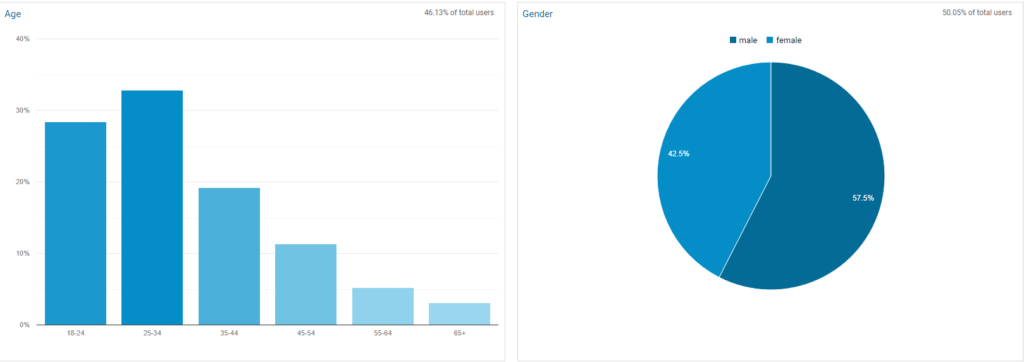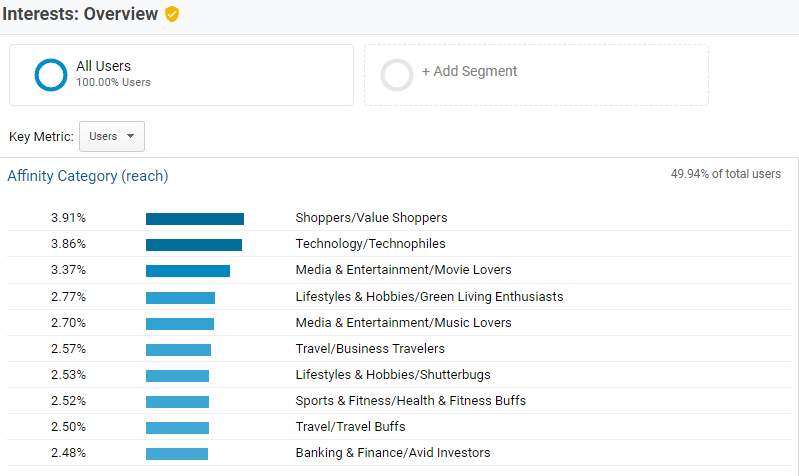
Want to use first-party or third-party data to launch ad campaigns that reach your ideal customers and clients but don’t know how they’re different or which one you should use?
The difference between first-party vs. third-party data in advertising is how the data is collected and who is collecting it. First-party data is data you collect directly from your audience. Third-party data is data collected by another entity or business and sold for you to purchase or collect.
Keep reading to learn more about the difference between first-party and third-party data and which one you should use to launch sales-boosting ad campaigns for your business!
P.S. Looking for a quick and easy way to collect first-party data from your website visitors? Nutshell’s user-friendly CRM platform allows you to collect valuable information about your audience, like their demographics, interests, and much more.
Sign up for your free trial today!
Access to data is essential for improving sales processes and launching marketing messages that expand your reach and drive conversions.
So, what are first-party, second-party, and third-party data? Find out below:
First-party customer data is information you collect directly from your current customers. In other words, you’ll use tools or software to collect customer data from your website or marketing channels rather than collecting the information from a third-party company.
First-party customer data can include various information about your customers.

A few first-party customer data examples include:
First-party data is essential for understanding your audience better and tailoring your marketing strategies accordingly. Here are some common sources where you can collect first-party data:
Second-party data is first-party data that is shared with partners or collaborators.
The main difference between second-party data and first-party data is that your partner or collaborator will usually collect and share the information with you rather than you collecting it yourself.
For example, let’s say you own a theater and offer a sweepstakes competition where people can win free tickets to a show. To run your sweepstakes, you partner up with a TV network. The TV network will include a sweepstakes entry form on its website where people will need to include their name and email address to enter the competition.
Then, the TV network will share the entries with you, and voilà, you’ve now got your hands on second-party data in the form of names and email addresses.
Third-party data in advertising is data collected by another organization or business other than your own that you can collect or purchase to use in your ad campaigns.
While some third-party data is publicly available, like U.S. Census or Bureau of Labor Statistics data, you’ll typically need to purchase third-party data from another company.
With rising concerns about online consumer privacy, several big tech companies, like Google and Apple, are phasing out third-party data, so it’s important to note that this data will become scarce.
With third-party data, you can learn about your audience’s demographics, company industry, website browsing history, purchase history, and more.
Related: Buying a lead list: The pros, the cons, and the things that might land you in jail
Curious about the differences between first-party vs. third-party data and which one you should use in your ad campaigns? We’ve got you covered. First-party and third-party data differ in their collection, purpose, and use.
View a breakdown of the key differences between first-party vs. third-party data below:
Third-party and first-party data can be collected from your audience using similar methods. However, the data is often collected by different tools. The person you collect the data from is also identified and validated differently for each data type.
With first-party data, you collect the data directly from your website visitors, leads, and current customers or clients using your website and channels.
Because you collect the data yourself, it’s stored on your domain so you can decide how you want to use it. You can collect and store first-party data with customer relationship management (CRM) software or a customer data platform (CDP).
Second-party data is collected from your business partner or another collaborator. You can collect second-party data by partnering with another organization that shares your goals. Since your interests are aligned, sharing data can benefit your sales and marketing efforts.
Third-party data is collected by another organization or entity other than your business. Independent researchers can also collect and store third-party data.
Because another organization collected the third-party data, they store it on their domain. You can then opt to purchase or collect third-party data for your own use.
Another key difference between first-party and third-party data is their purpose.
The purpose of collecting first-party data is to learn about the behavior and interests of your website visitors only.
You can collect first-party data to learn about your leads’ and current customers’ demographics and website behavior, like which pages they visit and how much time they spend on your website.
The purpose of collecting second-party data is to gather more data to help inform your sales and marketing efforts. In other words, you can partner with a business similar to yours and exchange data to gather more insights into your target audience.
The purpose of collecting third-party data is to learn about your target audience’s overall behavior online on websites and channels other than your own.
You can collect third-party data to learn about your audience’s browsing and purchase history to better understand their interests and online behavior, like which marketing channels they interact with.
Another key difference between first-party vs. third-party data is how you can use the data to launch sales-boosting ad campaigns.
With first-party data, you can launch highly targeted ad campaigns that reach the people who are most likely to purchase your products or services so that you can drive more sales for your business.
Once you obtain second-party data, you can use it in a similar way to first-party data. For example, you can learn more about your target audience, implement data-driven strategies to nurture your leads, and launch targeted ad campaigns.
You can use third-party data to boost your online visibility and reach more members of your target audience who have yet to discover your brand.
For example, you can use third-party data to learn which websites and channels your audience interacts with. You can then launch ad campaigns that promote your products and services on these channels to expand your reach and generate more leads and sales for your business.
Attend a live guided tour!

When comparing first-party vs. third-party data and deciding which you should use in your marketing strategies, there are several factors to consider, including:
Now that it’s clear how vital collecting and managing first-party data is for companies in today’s data-driven advertising landscape, how can you use customer data to help power your business’s growth?
Let’s dive in and explore some first-party data advertising and use cases in greater detail:
When you collect and unify data from your current customers, you’ll be able to map your customers’ journeys as they move through your sales funnel.
In other words, you can discover the different steps customers took and the order in which they took them before becoming customers.
That means you can learn which messages, content, and web pages are the most effective in nurturing your leads and encouraging them to convert. You can also learn where customers first discovered your brand. Plus, you can discover where prospects dropped out of your sales funnel.
As a result, you can optimize your lead generation strategies and ensure you send the right messages at the right time for future prospects to drive more leads and conversions for your business expertly.
When you launch an ad campaign, your number one goal is to reach the people most likely to purchase your products or services to maximize your sales and revenue.
With first-party data, this goal becomes infinitely easier to achieve. Instead of relying on third-party data from another company’s customers, you can collect data from your own customers.
That means you can learn more about the people who already purchase your products or services, like their demographics, pain points, and interests. You can even learn which channels customers use most to interact with your brand.
Armed with this valuable information, you can launch highly targeted advertisements through first part data advertising on the channels that resonate most with your target audience.
Additionally, you can use your customers’ demographic and interest data to take advantage of audience targeting features that ensure your ads always reach the people most likely to make a purchase.
Insights from first-party data enable your sales and marketing teams to track your leads in an endless loop better.
In other words, your marketing team can better understand which channels drive your business’s most (and best) leads, enabling them to optimize your strategies for even more (and better qualified) leads.
Your sales team can more effectively identify which processes and messages encourage leads to convert into loyal, paying customers, enabling them to improve their operations to earn more sales.
As a result, you can implement more closed-loop sales and marketing strategies that drive continuous leads and conversions for your businesses, earning you a higher return on investment (ROI).
Collecting data from your customers also enables you to implement more personalized experiences throughout your website and advertising.
People love seeing content tailored to their unique interests and pain points. In fact, 77% of people choose, recommend, and pay more for brands that provide personalized experiences.

When you collect first-party data, you can learn about your customers’ interests, demographics, job titles, and more, so you can implement personalized messages that resonate with future prospects.
For many uses, third-party data advertising is out and first-party advertising data is in. Future-proof your ad campaigns by collecting more first-party data for your company with Nutshell.
With our powerful, user-friendly CRM, you can collect essential data from your audience, like their demographics, contact details, stage in your sales funnel, and much more. With features like web form collection, built-in email marketing, and company tracking software Nutshell IQ, Nutshell can help your sales and marketing teams get the full picture of every customer and lead.
Plus, our team can help you leverage this data, so you can implement advertising campaigns that reach your target audience and encourage them to convert into customers or clients.
Ready to start growing your business with our first-party data solution? Start your free trial today!
Zero-party data is information customers actively share with you—like survey responses or preference center choices. First-party data is collected passively from their behavior (page visits, email opens, purchases). Together, they create a complete picture: zero-party reveals what customers want, while first-party shows what they do.
Obtain explicit, documented consent before collecting data. Offer granular consent options so users can approve specific uses (analytics, marketing, personalization separately). Implement preference centers for easy opt-out, maintain audit trails, and honor user deletion requests within 45 days. Transparency is your best defense.
You’ll need a CRM with web forms and tracking capabilities, email marketing software, analytics platform, and customer survey tools. A CRM like Nutshell centralizes this data in one place. For more collection methods, consider behavior tracking (Hotjar), surveys (Qualtrics), and marketing automation—all integrated to create a complete view.
Track metrics like conversion rate improvements, customer lifetime value increases, email engagement rates, and campaign performance. Compare costs of first-party data collection against revenue generated from targeted campaigns. Set baseline measurements before implementation, then monitor quarterly for improvement trends and impact.
Common pitfalls: collecting data without clear strategy, not respecting user privacy (damaging trust), relying on manual processes instead of automation, failing to integrate data across systems, and neglecting data quality. Start small, be transparent about usage, automate workflows, and regularly audit for accuracy.


Join 30,000+ other sales and marketing professionals. Subscribe to our Sell to Win newsletter!
